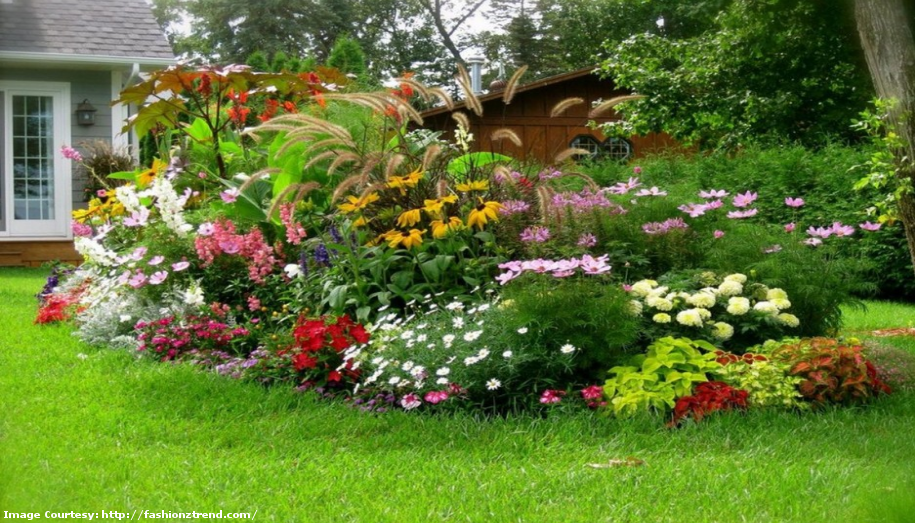Landscaping companies can be a valuable source of information for maintaining healthy lawn turf. The beauty of a perfect lawn begins with healthy green grass spread across the stretch of land. It not only represents a healthy lawn but also gives a spectacular look to your house.
But choosing the right grass for your lawn can be tricky at times. In fact choosing the right grass creates all the difference between a low-maintenance, environmentally-friendly lawn versus a dull and patchy, diseases prone lawn. You can consult landscaping companies for the right guidance when setting up your lawn.
But how do you choose the right type of lawn turf on your own?
First of all, don’t buy seeds on impulse. The type of grass you select should depend on several factors such as color, leaf width, characteristic appearance, density, compatibility with the climate and soil, water needs, etc.
Here are a few steps to follow before choosing the lawn grass:
Soil testing
Turf grasses usually thrive in well-aerated soil with pH between 6 to 7.5. It’s recommended to purchase a soil test kit from a lawn care company and test the soil. To take a soil test, gather soil samples from several places around your lawn. Mix it well and place it into the soil testing bag. Expect to wait for about two weeks to get the right results.
Select the grass
There are mainly two types of grasses, warm season grass and cool season grass.
Warm-Season Grass
Warm-season grasses are the ones that resonate with and grow better in warmer regions of the country. These include St. Augustine, Buffalo, Bermuda, Centipede and Zoysia. These grasses achieve their peak growth when summer is in full swing. They require full sun to thrive, although they may tolerate some shade.
Cool-Season Grass
Cool-season grasses are the ones that resonate with and grow better in cool northern regions of the country. These include tall and red fescues, perennial ryegrass and Kentucky bluegrass. These grass turfs grow the most during the cool seasons of spring and fall. Cool-season grasses are more shade-tolerant, especially the fescues.
Hence one key factor while choosing the right grass seed simply depends on your region.
Levels of Shade
The next thing to consider is the number of trees in your lawn. Since different types of grasses tolerate different levels of shade, dense trees can be a problem. Most grasses enjoy sunlight and need a minimum of six hours of direct sunlight to thrive. Even shade-tolerant grasses need around four hours of sunlight. If your lawn has more trees, opt for cool-season grasses, the shade-tolerant ones like rye and fine and tall fescues. There are also a few warm-season grasses that can grow in shade, like Zoysia and St. Augustine. It’s best to blend quality seeds of several types of shade-tolerant grasses and spread them around so if one dies, another can take its place.
Wear and tear of turf
It’s important to consider wear and tear of your lawn in advance. If you have a family with young children and pets who enjoy a summer pool and running around in the lawn, opt for a more resistant grass. Kentucky bluegrass is one such turf. It’s one of the finest choices for athletic fields, and is also self-mending. When bare spots occur, the turf can creep in to fill in holes automatically. However, it’s more demanding in terms of mowing, fertilizing and watering.
Fertilizing Your Lawn
Do research or consult landscaping companies to be sure of the fertilizing needs of the turf type you choose to grow in your lawn. If you’re more an organic kind of a person and love to fertilize your plants with organic fertilizers such as compost and other earth-friendly brews, make sure the grass you select responds well to that. Some turfs require more frequent fertilization. Also make sure you’re not planting a high-maintenance lawn when you have time only to grow a low-maintenance one. While buying grass seed read the label carefully. It should show weed seed content less than 1% and inert material content less than 4% with germination rate no less than 70%.
How to Water
Consider watering needs when you choose your grass seed. If you live in a region more prone to droughts and water scarcity, select a grass like Buffalo turf, tall fescue or Zoysia. Floratam is the St. Augustine’s variety that’s the most drought-tolerant, but it requires some shade. You may also need to install an irrigation system before planting the seeds.
Mowing needs
Finally, consider lawn mowing needs when selecting a grass type. Grasses like fescues have ideal growing heights and don’t need mowing as often as Kentucky bluegrass lawn. Among warm-season turf, Centipede and Bermuda grass needs more frequent mowing than Zoysia. Native grasses like Buffalo grass require the lowest amount of mowing. Turf that goes dormant in summer heat or winter chill also demands less mowing during periods of dormancy.
Growing a lawn from seed offers an affordable option, especially for smaller lawns. Keeping these points in mind can help you have the best grass and easiest maintenance for your lawn. You can always find newer seed types at a nursery or landscaping companies that specialize in lawn installation. In fact they can also help you with the details you need to keep your turf healthy.
Always buy top-quality seed. It’s worth the investment!


